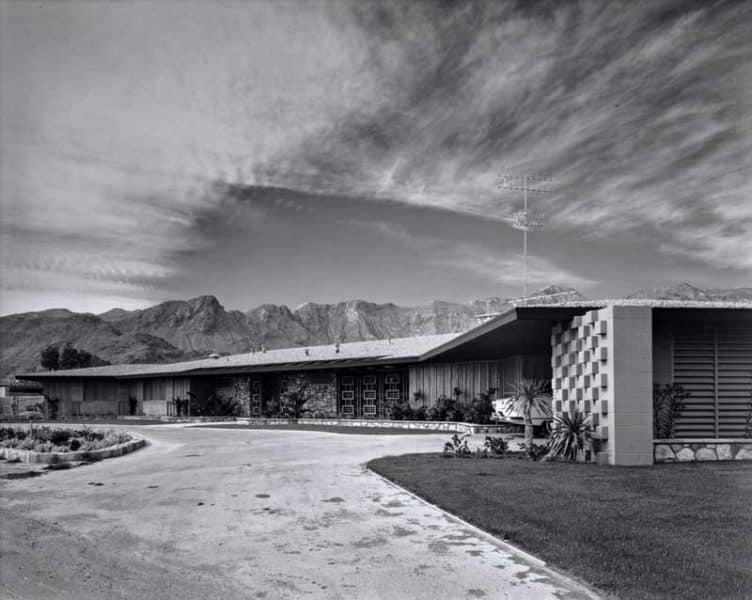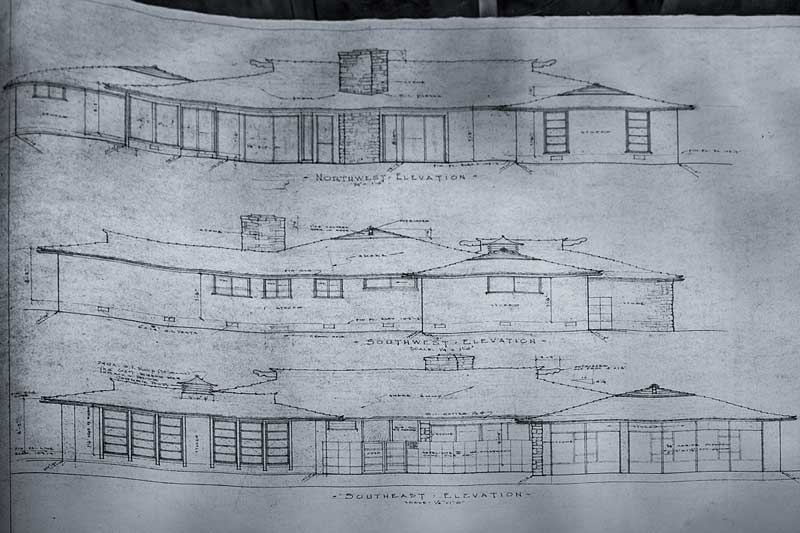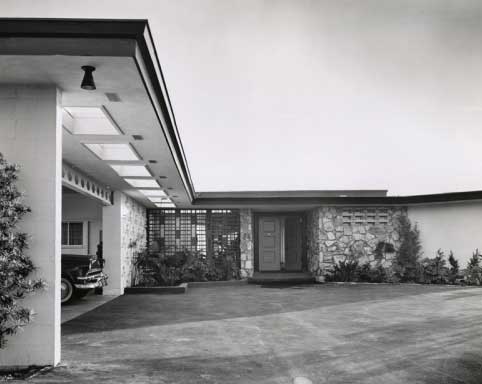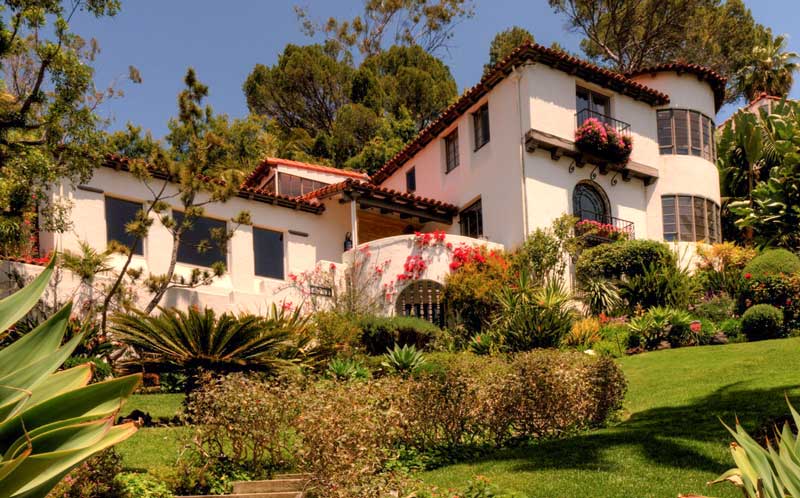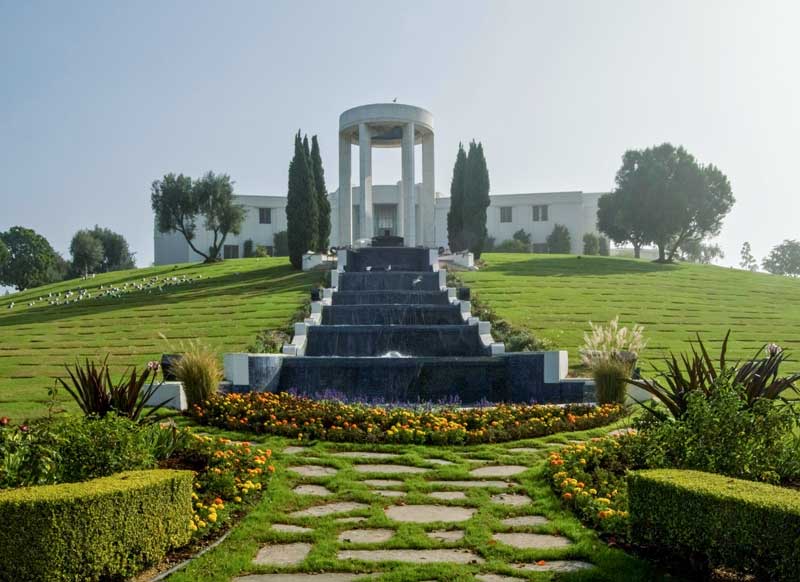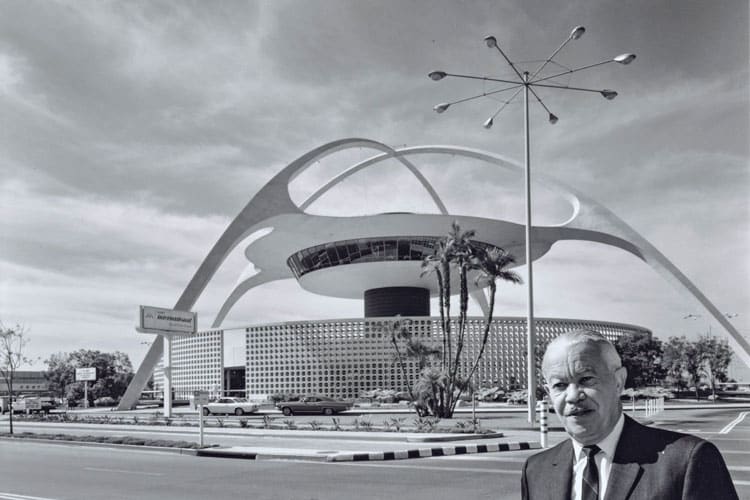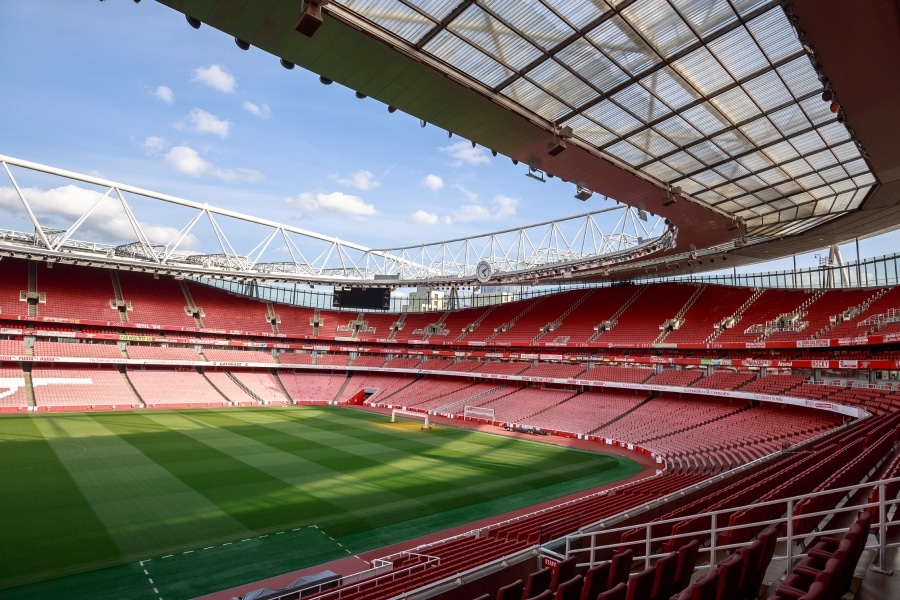Duality. Balance. Design. These were the guiding principles in the life of one of the greatest Americans you’ve never heard of. Paul Revere Williams was one of the most important and prolific commercial architects ever to hit the drawing board. As a black man in early 20th-century America, he encountered constant reminders of racism and prejudice that threatened to bar his success, but Williams didn’t see these threats as insurmountable walls. Besides, by trade, the man drew and sketched his own walls.
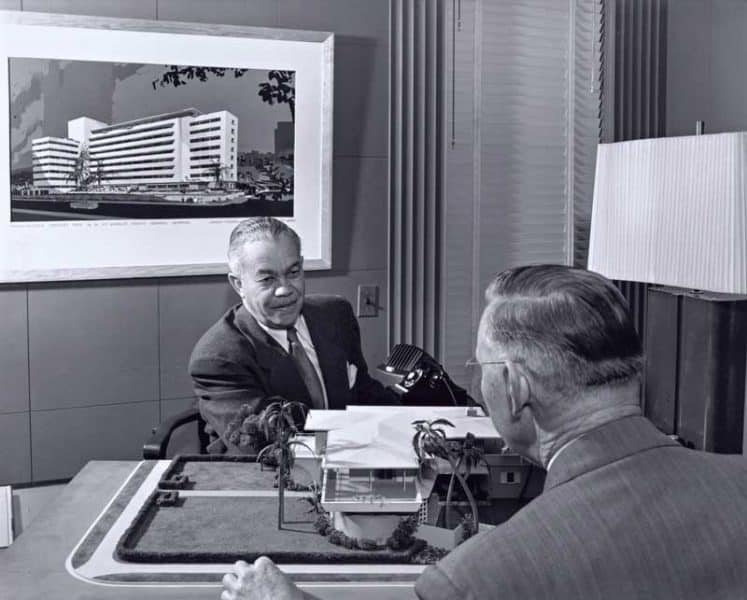
The Beginnings
Williams was born in 1894 in a city his life’s work would ultimately help to define: Los Angeles. By the age of 4, both of his parents had passed away from tuberculosis, so he was sent to a foster home. He found himself in the care of Mrs. Clarkson, a thoughtful foster parent who nurtured his love for art and drawing. As Williams’ honed his skills, one of Mrs. Clarkson’s friends who was in construction turned the young artist onto architecture. While Williams now had a focus, he also had his first obstacle. “He stared at me with as much astonishment as he would have had I proposed a rocket flight to Mars,” Williams wrote of an interaction with his Polytechnic High School Guidance Counselor. “Whoever heard of a Negro being an architect?”
Williams simply used the interaction as fuel. “If I allow the fact that I am a Negro to checkmate my will to do, now, I will inevitably form the habit of being defeated,” he thought to himself before committing this sentiment to paper some years later. With even greater purpose, Williams forged ahead after graduating high school in 1912, studying with the local atelier of the New York-based Beaux-Arts Institute of Design. In one ear, he was getting European principles of design, in the other, he was getting more “reminders”: “Your own people can’t afford you, and White clients won’t hire you,” Williams wrote of the criticisms he often heard.
While he was not yet a full-fledged architect, Williams dressed the part, making daily rituals out of pressing his suits and perfectly combing and grooming his mustache. He was also combing the city’s local firms for apprenticeship opportunities. He scored an unpaid daytime apprenticeship at the firm of landscape architect Wilbur D. Cook, Jr., and shortly thereafter won a student competition with his design for a new civic center in Pasadena. The prize was $200 and marked the first time Williams was paid for a design. The experience made him further his education at USC, where he graduated with an architectural engineering degree. Just before he became a licensed architect, an old friend from Polytechnic High looked him up for a design. Williams then scored his first contract, a $90,000 deal, but also encountered yet another reminder. The house was to be built in the Flintridge Hills area of Los Angeles—an area with regulations that people of color could not live there. “The land deed said a Black person could not even spend the night,” writes his granddaughter, Karen Hudson, in one of her novels chronicling Williams’ life and works. Still, the money gave Williams a chance to design one of the most important structures of his career—a sign on the downtown Los Angeles Stock Exchange Building that read “Paul Williams & Associates.”
‘Without having the wish to ‘show them,’ I developed a fierce desire to ‘show myself.’ I wanted to vindicate every ability I had. I wanted to acquire new abilities. I wanted to prove that I, AS AN INDIVIDUAL, deserved a place in the world.’
Paul Revere Williams’ 1937 essay entitled “I Am a Negro” for American Magazine
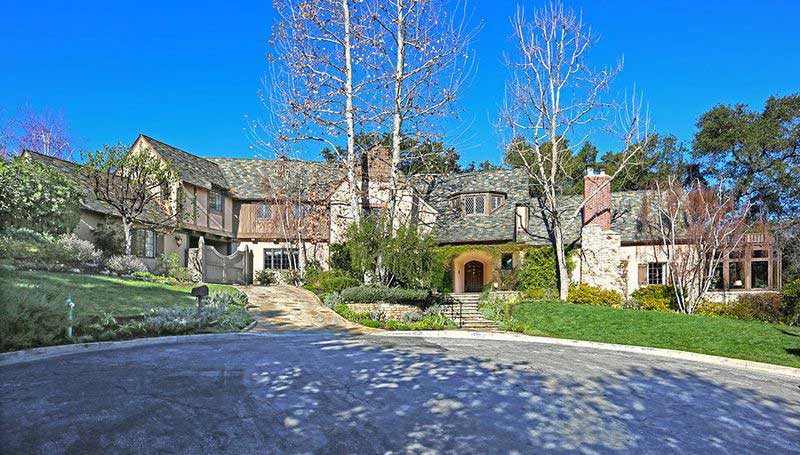
The Career
As a licensed architect with his own practice, Williams still experienced regular signs of prejudice. “In the early years of Williams’ career, prospective home builders would visit his office—drawn to him either by reputation or by chance—without realizing he was Black,” wrote Shashank Bengali in an online post on Williams for The University of Southern California in 2004. Despite having not only earned his license to practice architecture as well as the positive reputation for the quality of his services, his skin color still proved to be an issue for perspective clients. “The moment … they met me and discovered they were dealing with a Negro, I could see many of them freeze. Their interest in discussing plans waned instantly and their one remaining concern was to discover a convenient exit without hurting my feelings,” said Williams in an essay entitled “I Am a Negro.” Ever the determined professional, Williams refused to let societal constraints stop him from pursuing his career. He learned to draw his architectural renderings upside down—as he was aware that some white clients refused to sit next to a black man. As he toured structures or met with groups of architects, he stood and walked with his hands clasped behind his back like a stoic steward, as he wanted to remove the awkwardness that often came from white clients who were unsure if they should shake his black hand. No matter the circumstance, there would be nothing that stood in the way of Williams’ career aspirations, and in 1920, he was appointed to the first Los Angeles City Planning Commission. In 1923, he became the first African-American member of the American Institute of Architects (AIA).
Recently married, the young architect lost his first child in 1925, and though he and his wife went on to have two more children, he would later channel his loss into designing St. Jude Children’s Research Hospital in Memphis, Tennessee. Williams designed the facility for free as a favor to a friend, the actor Danny Thomas who was the hospital’s founder and a notable advocate for children’s welfare. Ironically, the 10-year commemoration for the hospital was held at the same hotel where Williams’ father had once been head waiter. Following these early successes, Williams launched into the stratosphere of architectural greatness for the next six decades.
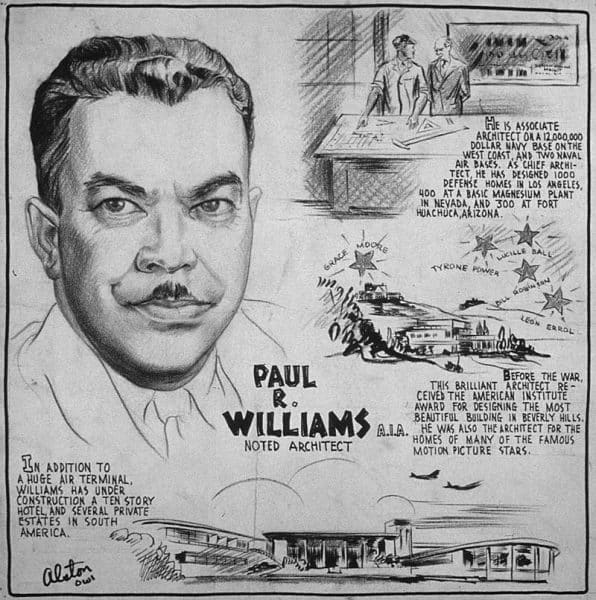
The Legacy
Anyone who has visited Los Angeles has seen Williams’ work. The architect was responsible for the design of over 3,000 structures, many of them in and around Southern California. Williams’ structures have their own perfect balance of elegance and livable comfort—something extremely hard to achieve in the luxury design market where he thrived. A master of Georgian and Colonial American styles, Williams was equally at home designing Spanish Colonial, Tudor Revival, French Chateau, Regency, French Country, Mediterranean and even post WWII Modernism style structures. His style made him the go-to designer for the Hollywood elite. The world-renowned Beverly Hills Hotel received a Williams upgrade, including its signature pink and green colors and iconic script logo, as well as the famed Polo Lounge. Celebrities and public figures who sought out his services include Frank Sinatra, Cary Grant, Lucille Ball and Desi Arnaz, Barbara Stanwyck, Charles Correll, Bert Lahr, Tyrone Power, Will Hays, Zasu Pitts, Danny Thomas and Lon Chaney. With the warmth of Southern California as a backdrop, Williams pioneered indoor and outdoor living with the harmony of patios as extensions of the house, hidden retractable screens, sweeping staircases, modernist interior fireplaces and master suites.
‘When asked what was my theory of design—that I did so many contemporary buildings, yet I shunned the exotic approach—my answer was, ‘conservative designs stay in style longer and are a better investment.’’
Paul Revere Williams
Williams’ Awards
- 1923 – First African-American member of the American Institute of Architects (AIA)
- 1939 – AIA Award of Merit for the design of the MCA Building in Los Angeles
- 1941 – Lincoln University of Missouri Honorary Doctor of Science
- 1951 – Omega Psi Phi Fraternity, Inc., Man of the Year award
- 1952 – Howard University Honorary Doctor of Architecture
- 1953 – NAACP Spingarn Medal for outstanding contributions as an architect and member of the African American community
- 1956 – Tuskegee Institute Honorary Doctor of Fine Arts
- 1957 – First black member to be inducted into the AIA’s College of Fellows
- 2017 – Posthumously honored with the American Institute of Architects (AIA) Gold Medal
Williams’ commercial buildings are just as recognizable as his commissioned mansions. From the LAX Theme Building, the LA County Courthouse, Saks Fifth Avenue, the Palm Springs Tennis Club, Perino’s, the Ambassador Hotel, the Golden State Mutual Life Insurance Building, and the Music Corporation of America building in Beverly Hills to modest tract houses, apartments, hospitals, schools, hotels, churches, private clubs, public housing projects, department stores, funeral homes and even car dealerships, Williams made his mark on the city of Los Angeles and the world of commercial architecture. And while high society was aware of and applauded his talents, he never forgot about his community and his upbringing. Williams designed the Nickerson Garden Housing Project, the Pueblo del Rio Housing Project, the 28th St. YMCA, the First AME Church, much of the West Adams neighborhood and the Golden State Mutual Life Insurance Building, one of the few institutions that would insure blacks at a time when other businesses would charge outrageous premiums or flat-out deny them coverage.
Williams passed away in 1980, and even in death was dealt a final reminder that race in America is still a complex and pressing issue: His career archives—containing his drawings, photos, business records, writings and notes—were destroyed when the Broadway Federal Savings building in Watts burned down in the civil unrest of the 1992 LA riots after police officers were acquitted in the Rodney King verdict.
During Modernism Week in Palm Springs, CA this February, Williams is set to receive a star with his name on it, imbedded in the downtown sidewalk to honor and recognize his contribution to the local history and culture.
Special thanks to source material and resource providers:
Leslie L. Lubbers and J N Miller, University of Memphis, Paul R. Williams Project
The Paul Revere Williams Project
Shashank Bengali, USC “Williams the Conqueror”
Karen Hudson, Author “The Will and the Way: Paul R. Williams, Architect”
Janna Ireland, Photographer “There Is Only One Paul R. Williams: A Portrait by Janna Ireland”
